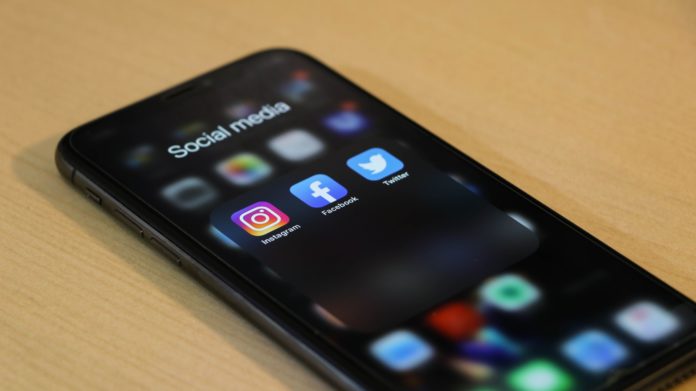
Technology is playing a crucial role in our understanding of the current coronavirus crisis (think testing, vaccine development, digital communications) and it will play a critical role in shaping our post pandemic world.
Consumers now are looking to technology to solve new food challenges, too, with an eye toward sustainable outcomes. It’s a recent and significant shift according to the latest ethnographic research from cultural anthropologist Ujwal Arkalgud, co-founder of MotivBase and a member of The Center for Food Integrity (CFI) Consumer Trust Insights Council.
The question is, how will technology in food and agriculture be perceived by consumers going forward? While consumers are asking for innovation in the food system now, will they view innovation as positive and something they should embrace and support? Or, will innovation be perceived as another looming threat that should be avoided at all costs?
The answer to those questions rests with those who bring the technology to market.
It depends
In a time of uncertainly and anxiety when certainty is at a premium, “it depends” is the least popular answer, and the right answer to this question.
The reality is, technology is values neutral. How innovation is used and perceived is definitely not values neutral. Does the technology bring meaningful social benefit, or simply enhance the company’s bottom line? Too often, this question is posed as a mutually exclusive dichotomy, when the best solutions do both.
The key to successful introduction of technology is authentic and transparent communication of the social benefits while acknowledging the benefit to business. Here are two examples.
Bye-bye buffet
My favorite Indian buffet is closed, probably for good. The same is true for salad bars and any other restaurant that relied on us to serve ourselves, with everyone using the same spoon, ladle or tongs. Looking back on the practice through the lens of hand sanitizers and masks, it is a wonder that buffets weren’t banned sooner.
Takeout has replaced dining in, and our collective awareness of food safety and public health is at an all-time high. Single-use food service utensils and packaging, once demonized, are now seen in a new light as tools that help protect food safety and public health. This is a definite shift in sustainability priorities. We now see more benefits, in addition to the tradeoffs, of single-use materials.
Does this mean public scrutiny over single use has come to an end? Absolutely not! But it does highlight the opportunity for technology to bring circular solutions to the table in a new light, an opportunity to find creative answers to two critical social imperatives – protecting public health and protecting our environment. Technology that turns single use to reuse will achieve both objectives and build public support.
It’s in the genes
The rush to find effective treatments and vaccines for COVID-19 has created new appreciation for the power of science to solve some of our most pressing problems. That appreciation creates an opening to broaden the discussion about the additional ways science and technology are addressing challenges across food and agriculture.
Gene editing is the next iteration of genetic technology that can help farmers be more resilient, grow food in our changing climate and help livestock producers prevent disease. The same technology is being used to create impressive new human treatments for cancer, sickle cell disease and other maladies that cause suffering and death.
Now is the time to connect the dots between the technology that creates powerful new tools in human medicine and how those same tools are being used to improve the food we need and use fewer natural resources.
Three things
We can dramatically improve our ability to introduce technological solutions in food and agriculture by embracing these three simple concepts.
- It’s not about the technology, it’s about the benefits the technology delivers. Debating the technology is a losing proposition. Focus your time and energy on introducing the many ways the technology benefits consumers, society, farmers and the environment. The benefits need to be relevant to your stakeholders. Enhancing efficiency and productivity may be relevant to bankers and shareholders, while reducing environmental impact is important to consumers and civil society. Frequently, improving productivity reduces environmental impact, so aligning the benefits by stakeholder can broaden support.
- Be transparent. Open a dialogue and invite anyone interested to engage in the discussion. Be open about risks and tradeoffs as well as benefits. Authentic transparency is the most effective strategy to build trust.
- Engagement is a process, not an event. “How many times do I have to tell you?” may be a frequent rhetorical question from parents and teachers. While the exact answer may be elusive, it is always more than one. Each of us is bombarded with more information than we can process every day. An effective and sustained engagement strategy is the only way break through the clutter and build support in today’s influencer-dominated environment. Stakeholder engagement is a marathon, not a sprint. Build your strategy and plan to go the distance if you want to be successful in building support for your technology.
Shared values are the foundation for building trust. Technology is values-neutral, but your brand is not. You can build trust in your technology by aligning the values of your company and the technology with the values of stakeholders who shape consumer trust.
The Center for Food Integrity (CFI) is a not-for-profit organization that helps today’s food system earn consumer trust. CFI members and project partners, who represent the diversity of the food system, are committed to providing accurate information and working together to address important issues in food and agriculture. The Center does not lobby or advocate for individual companies or brands. For more information, visit www.foodintegrity.org. CFI is also home to Optimizing Sustainability, a framework intended to give food system stakeholders tools and processes to evaluate the growing list of sustainability priorities, allowing them to make better-informed decisions aligned with their values and those of their stakeholders. For more information, visit https://
Contacts:
Jana McGuire, jana.mcguire@foodintegrity.org, (402) 430-8723
Charlie Arnot, CEO, The Center for Food Integrity







